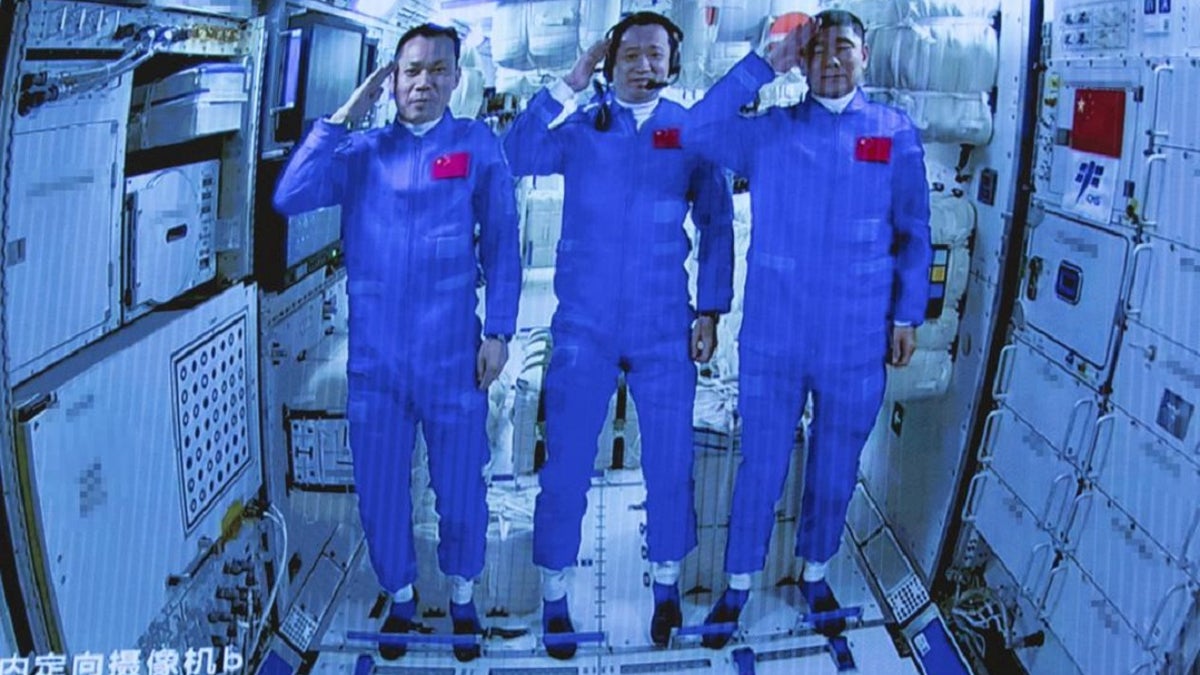Fox News Flash top headlines for June 17
Fox News Flash top headlines are here. Check out what's clicking on Foxnews.com.
Three Chinese astronauts arrived Thursday at China’s new space station at the start of a three-month mission, marking another milestone in the country’s ambitious space program.
Their Shenzhou-12 craft connected with the space station module about six hours after taking off from the Jiuquan launch center on the edge of the Gobi Desert.
About three hours later, commander Nie Haisheng, 56, followed by Liu Boming, 54, and space rookie Tang Hongbo, 45, opened the hatches and floated into the Tianhe-1 core living module. Pictures showed them busy at work unpacking equipment.

Chinese astronauts salute after successfully entering the Tianhe space station module as they are displayed on a big screen at the Beijing Aerospace Control Center in Beijing, on Thursday, June 17, 2021. (Jin Liwang/Xinhua via AP)
"This represents the first time Chinese have entered their own space station," state broadcaster CCTV said on its nightly news broadcast.
The crew will carry out experiments, test equipment, conduct maintenance and prepare the station for receiving two laboratory modules next year. The mission brings to 14 the number of astronauts China has launched into space since 2003, becoming only the third country after the former Soviet Union and the United States to do so on its own.
All appears to have gone smoothly so far. China’s leaders hope the mission will be a complete success as the ruling Communist Party prepares to celebrate the centenary of its founding next month.
NASA ADMINISTRATOR BILL NELSON ADDRESSES CHINA CONCERNS, ASKS FOR BILLIONS IN FUNDING
The astronauts were seen off by space officials, other uniformed military personnel and a crowd of children waving flowers and flags and singing patriotic songs before blasting off at 9:22 a.m (0122 GMT) atop a Long March-2F Y12 rocket.
The rocket dropped its boosters about two minutes into the flight followed by the cowling surrounding Shenzhou-12. After about 10 minutes it separated from the rocket’s upper section, extended its solar panels and shortly afterward entered orbit.
About a half-dozen adjustments took place over the following six hours to line up the spaceship for docking with the Tianhe-1, or Heavenly Harmony, module at about 4 p.m. (0800 GMT).
PHOTOS SHOW CHINA'S MARS ROVER ON RED PLANET
The travel time is down from the two days it took to reach China’s earlier experimental space stations, a result of a "great many breakthroughs and innovations," the mission’s deputy chief designer, Gao Xu, told state broadcaster CCTV.
"So the astronauts can have a good rest in space which should make them less tired," Gao said.
CLICK HERE FOR THE FOX NEWS APP
Other improvements include an increase in the number of automated and remote-controlled systems that should "significantly lessen the pressure on the astronauts," Gao said.




















